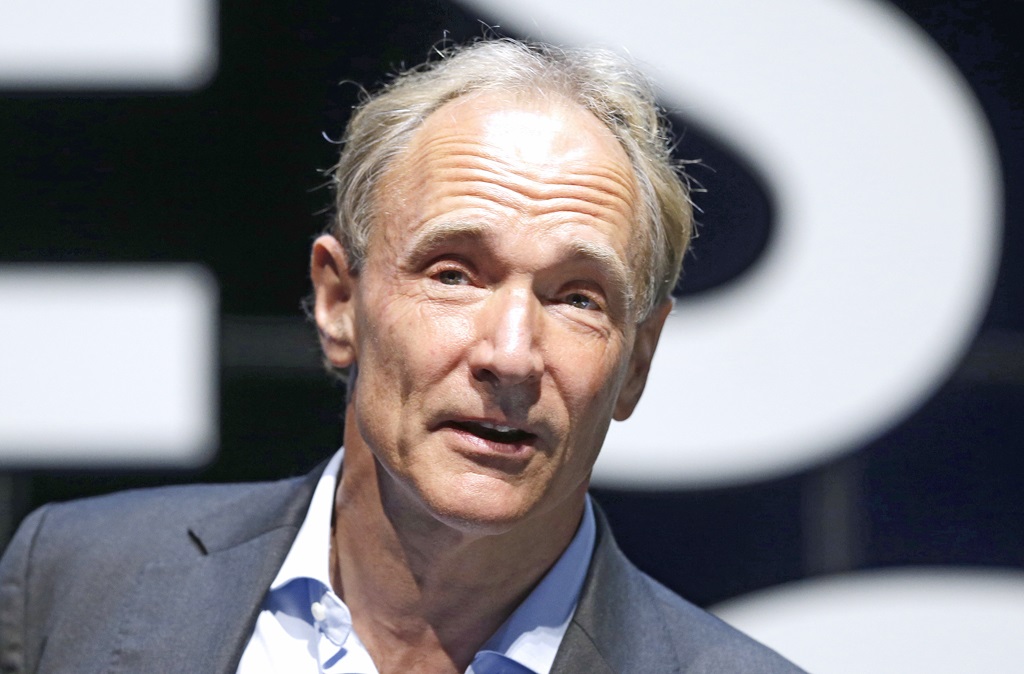
Geneva (AP) – The inventor of http for the World Wide Web knows his revolutionary innovation is coming of age, and doesn’t always like what he sees: state-sponsored hacking, online harassment, hate speech and misinformation among the ills of its “digital adolescence.”
Tim Berners-Lee issued a cri-de-coeur letter and spoke to a few reporters on the eve of the 30-year anniversary of his first paper with an outline of what would become another big step toward transforming countless lives and the global economy.
The European Organization for Nuclear Research, known as CERN, plans to host Berners-Lee and other web aficionados. “We’re celebrating, but we’re also very concerned,” Berners-Lee said.
Late last year, a key threshold was crossed – roughly half the world has gotten online. Today some 2 billion websites exist.
The anniversary offers “an opportunity to reflect on how far we have yet to go,” Berners-Lee said, calling the “fight” for the web “one of the most important causes of our time.”
He is convinced the online population will continue to grow, but says accessibility issues continue to beset much of the world.
“Look at the 50 percent who are on the web, and it’s not so pretty for them,” he said. “They are all stepping back suddenly horrified after the Trump and Brexit elections realizing that this web thing that they thought was so cool has actually not necessarily been serving humanity very well.”
The anniversary is also a nod to the innovative, collaborative and open-source mindset at the Geneva-based CERN, where physicists smash particles together to unlock secrets of science and the universe.
As a young English software engineer, Berners-Lee came up with the idea for hypertext-transfer protocol – the “http” that adorns web addresses – and other building blocks for the web while working at CERN in March 1989. Some trace the actual start of the web to 1990, when he released the first web browser.
Berners-Lee reminisced about how he was really out to get disparate computer systems to talk to one another, and resolve the “burning frustration” over a “lack of interoperability” of documentation from disparate computing systems used at CERN in the late 1980s.
Now, the hope of his World Wide Web Foundation is to enlist governments, companies, and citizens to take a greater role in shaping the web for good under principles laid out in its “Contract for the Web.”
Under the contract’s sweeping, broad ambition, governments are supposed to make sure everyone can connect to the internet, to keep it available and to respect privacy. Companies are to make the internet affordable, respect privacy and develop technology that will put people – and the “public good” – first. Citizens are to create and to cooperate and respect “civil discourse,” among other things.
To Berners-Lee, the web is a “mirror of humanity” where “you will see good and bad.”
“The Contract for the Web recognizes that whether humanity, in fact, is constructive or not actually depends on the way you write the code of the social network,” he said.
Some tough regulation may be necessary in some places, in others not, Berners-Lee said.
On one issue, he’s insistent: “Net neutrality – strong regulation,” Berners-Lee said, hammering a fist on the table. He was alluding to a principle that anyone with an internet connection should have equal access to video, music, email, photos, social networks, maps and other online material.
Berners-Lee said the web has created opportunity, made lives easier and given the marginalized a voice, but “it has also created opportunity for scammers, given a voice to those who spread hatred, and made all kinds of crime easier to commit.”
Ultimately, his “Contract” proposal is not about “quick fixes,” but a process for shifting people’s relationship with the online world, he said.
“It’s our journey from digital adolescence to a more mature, responsible and inclusive future,” he wrote.
(Editor’s note: There were earlier versions of what eventually became the internet, including the Advanced Research Projects Agency Network (ARPANET), established in 1969 and closed in 1990, an early packet-switching network and the first network to implement the TCP/IP protocol suite. Both technologies became the technical foundation of the Internet.)




